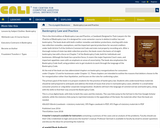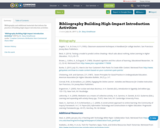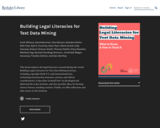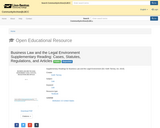DEBIDO A QUE ACTUALMENTE SE ENCUENTRA EN REVISIÓN LA TESIS, EL DOCUMENTO ES PRIVADO POR EL MOMENTO,
PRÓXIMAMENTE SE DARÁ MAS INFORMACIÓN. GRACIAS.
La Tecnología de la Información (TI) siempre ha sido considerada un punto importante en las organizaciones empresariales, desde la perspectiva de los costos y de gestión. Es parte integral de la tecnología y los modelos de negocio de las empresas y las ha obligado a adaptarse a las nuevas estrategias de tecnología. Con los avances de infraestructura en la tecnología de la información y la comunicación, los nuevos modos de programación y los nuevos modelos en su uso; han llegado también nuevas formas de denominar los servicios de Internet. Factores como la mercantilización de hardware, software de código abierto, la virtualización, la globalización de la fuerza de trabajo y los procesos ágiles de TI han apoyado el desarrollo de nuevos modelos de tecnología y negocios. La computación en nube o Cloud Computing ofrece a las organizaciones más opciones en cuanto a cómo gestionar las infraestructuras, ahorrar costes, trabajar en equipo remotamente y delegar responsabilidades a proveedores de servicios Cloud o terceros, sin que los usuarios tengan que tener ningún conocimiento de la infraestructura que hay detrás.
La mayoría de las empresas se esfuerzan por reducir su coste del área de TI a través de los medios de virtualización. Esta demanda de reducir el costo ha dado lugar a la innovación de la computación en nube, ya que ofrece una reducción en los costos de administración así como reducción de costos de infraestructura. Los grandes beneficios del Cloud Computing permiten la adquisición de recursos computacionales de manera rápida, flexible y con un menor costo de implementación para los usuarios o empresas y es rentable para los proveedores, pues a pesar de presentar algunos riesgos, el poder trabajar con este nuevo tipo de tecnología permite al usuario ahorrarse tanto licencias, como la administración de servicios y de los equipos necesarios. Además de beneficios en términos de costo, el Cloud Computing puede presentar beneficios de seguridad ya que brinda a las empresas normas y estándares de seguridad de los más altos niveles internacionales. Incluso presenta beneficios ambientales y sociales. Todo gracias a la arquitectura conformada por los modelos con los cuales trabaja el Cloud Computing, denominadas por sus siglas: SaaS, PaaS e IaaS, las cuales corresponden al software, plataforma e infraestructura como servicios respectivamente.
El Cloud Computing se encuentra todavía en una etapa infantil y es una nueva tecnología para las micro, pequeñas, medianas o nuevas empresas. Existen pocas guías y marcos para una óptima adopción, la mayoría de ellos no se encuentran en la lengua española o no engloban todos los factores y cuestiones necesarias para generar confianza en esta tecnología. Por lo tanto, la mayoría de las empresas no están muy seguras en adoptar la tecnología. La presente tesis aborda el problema de confianza en la adopción y se discuten y analizan las barreras que se pueden presentar al adoptar la computación en nube en una empresa. Se presentan una serie de estrategias, una hoja de ruta y un marco que servirán como una guía para enfrentar los desafíos, cuestiones o factores en términos de costo, seguridad, confidencialidad, confianza, cumplimiento normativo, cumplimiento legal y cumplimento-TI, así como los factores organizacionales/humanos. En esta tesis se detallan exhaustivamente todos los temas referentes al Cloud Computing desde sus antecedentes, evolución, arquitectura, tecnología, modelos de negocio, modelos de servicio, modelos de despliegue, proveedores del servicio, etc. y así se logre un profundo entendimiento del paradigma de computación en nube. La metodología fue realizada siguiendo los lineamientos de diferentes estándares, normas, protocolos, estándares, certificados y mejores prácticas internacionalmente reconocidas respecto a la seguridad de la información en un entorno de TI ó enfocadas a entornos de Cloud Computing como: ISO/IEC 27001, ISO/IEC 27002, COBIT, ITIL, KMIP, TLS/SSL y CCSK. Esto logra una metodología con procedimientos adecuados para la adopción de Cloud Computing en las micro, pequeñas y medianas empresas que ya adoptan servicios de nube o están interesados en su adopción.
Palabras clave: Computación en Nube, Cloud Computing, SaaS, IaaS, PaaS, Costo, Cumplimiento, Seguridad, Confidencialidad, Confianza, Micro, Pequeñas y Medianas Empresas, Adopción, Estrategias.



















